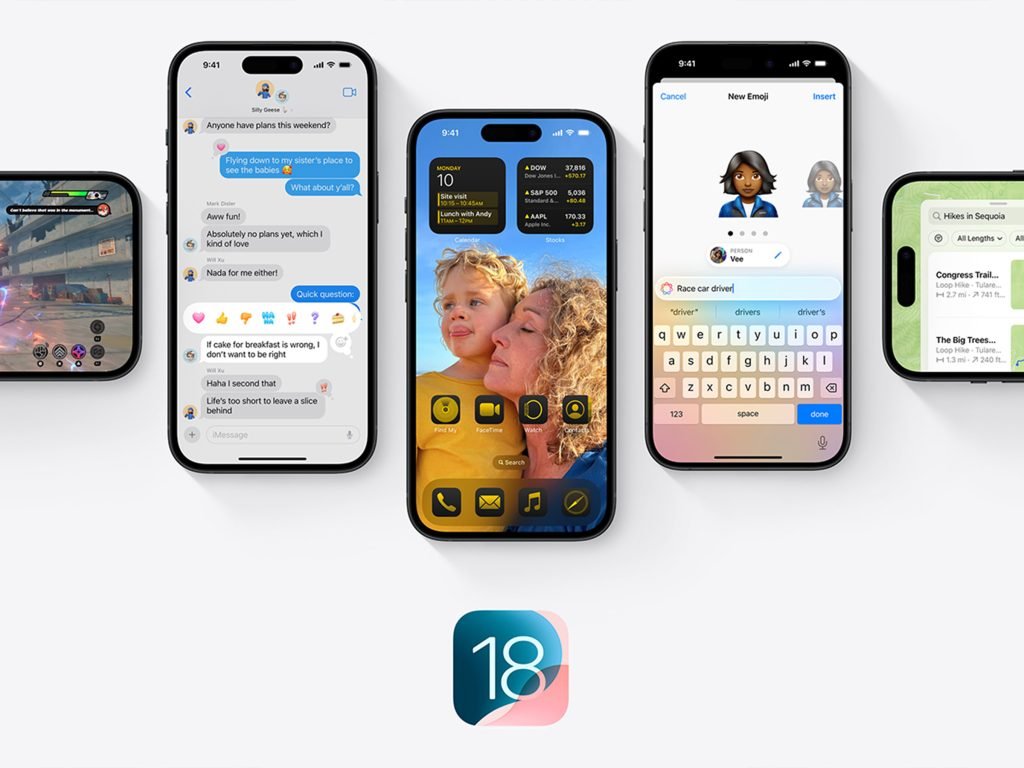New Accessibility Feature
With the release of iOS 18 and iPadOS 18, Apple will debut Eye Tracking, allowing you to control your iPhone using only your eyes. This is particularly beneficial for individuals with motor impairments, providing them with greater independence and ease of use. This guide will walk you through the setup process, options, and practical applications of Eye Tracking on iOS 18 and iPadOS 18.
Apple says Eye Tracking works across iPadOS and iOS apps, and doesn’t require additional hardware or accessories.
How Eye Tracking Works
Eye Tracking technology on iPhone works by using the front-facing camera and advanced sensors to detect and track eye movements. This allows the device to interpret where you’re looking on the screen, enabling you to control the iPhone by focusing on specific areas or icons. By maintaining your gaze on a particular spot, you can select, scroll, and interact with various elements, offering a hands-free and efficient way to navigate the device.

Setting Up Eye Tracking On iPhone
Ensure Compatibility & Update
Before setting up Eye Tracking, make sure your iPhone is running iOS 18.
Open Accessibility Settings
First, open the Settings app on your iPhone running iOS 18. Tap Accessibility, then scroll down and select Physical and Motor, then select Eye Tracking. Toggle the switch to turn on Eye Tracking. Follow the on-screen instructions to complete the calibration process. This involves tracking a coloured circle around the screen with your eyes to ensure accurate detection.
After successful calibration, dwell control will be automatically enabled. To customise Dwell Control settings, go to Dwell Control settings within Assistive Touch.
Dwell Control For Actions
Dwell Control is a key feature of Eye Tracking that allows you to perform actions by maintaining your gaze for a specified duration. This can be customised in the settings to suit your preferences. For example, you can set a longer dwell time for more deliberate actions and a shorter dwell time for quicker responses.
Dwell Control is different to Eye Tracking with Apple Vision Pro, where you instead tap your index finger and thumb to select actions.
Once Set Up
Once Eye Tracking is set up, you can use it to perform various actions on your iPhone. Some applications and benefits of Eye Tracking include locking and unlocking your iPhone without touching the screen. Simple look at the lock icon and hold your gaze until the action is completed.
You can also navigate the Home Screen by simply focussing on an app icon to highlight, then hold your gaze to open the app. You can also swipe through Home Screen pages by looking at the left or right edge of the display.
You can also scroll through websites, documents, or lists by looking at the top or bottom of the screen to scroll up or down, respectively. Simply hold your gaze to continue scrolling.
Media playback is also easy with Eye Tracking. Just focus on the play / pause button or other media controls to perform actions such as play, pause, or skip.
Customising Eye Tracking Settings
There are various customisation options to ensure Eye Tracking meets your needs and the needs of all users. Some settings you can adjust are pointer appearance, auto-hide, and snap to item.
Pointer Appearance
To adjust pointer appearance, go to Settings, then Accessibility, then select Pointer Control. Here you can customise the pointers appearance, including its colour and thickness to make it more visible and easier to track.
Auto-Hide
You can enable Auto-Hide to fade the pointer when not in use. Simply
1. Enable Auto-Hide to fade the pointer away when not in use.
2. Set the duration before the pointer reappears and adjust its visibility when idle.
Snap to Item
Turn on Snap to Item to make it easier to reach and activate on-screen items. This feature ensures the pointer snaps to the nearest actionable item, reducing the need for precise eye movements.
Troubleshooting Eye Tracking
If you encounter issues with Eye Tracking, you can try to adjust Settings and recalibrate Eye Tracking.
Recalibrate Eye Tracking
Ensure your iPhone is on a stable surface roughly 40 cm away from your face. Repeat the calibration process to improve accuracy.
Adjust Settings
You can go to Settings, tap Accessibility, then tap Eye Tracking to make adjustments to improve responsiveness and accuracy.
Compatibility With Third-Party Eye Tracking Devices
Ensure your third-party eye-tracking device, if you’re using one, is compatible with iOS 18. Refer to the manufacturer’s documentation for specific compatibility details.
